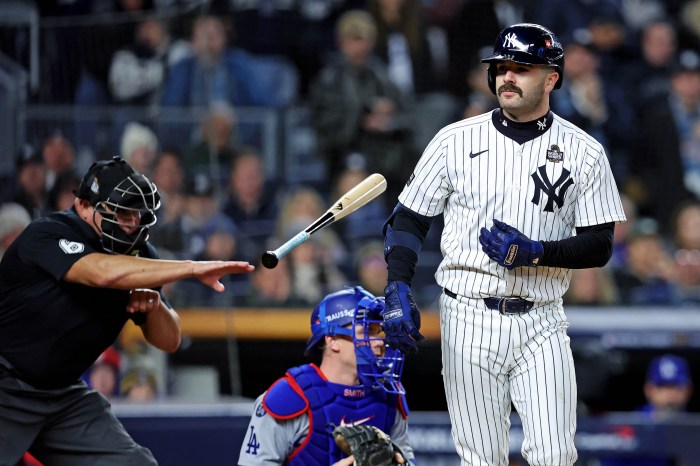With a little more than four weeks to go before meaningful NFL games begin, fantasy football draft season is in full swing once again.
But even with Week 1 of 2019 less than one month away, the lessons from 2018 must factor into preparations for this season. Those who forget the past are doomed to repeat it, as many a wise man and woman have said.
What follows are some of the most vital lessons from last year that will serve fantasy managers well this fall.
Beware of holdouts
Few took Le’Veon Bell’s threats of sitting out the season seriously last August as he and the Pittsburgh Steelers played a game of chicken over the running back’s desire for a long-term contract. Bell was among the top three highest-ranked players, and his average draft position (ADP) reflected that. The elite RB showed his mettle, following through and missing all of 2018.
Shame on anyone who drafted Bell but failed to pick up his backup, James Conner. The understudy was a clear RB1 for the duration of the year, but he went undrafted in the vast majority of leagues, even a week before the season began. Those who took a flier on him early were handsomely rewarded, leaving those who used a first-round pick on Bell to curse him under their breath — or flame him on social media.
This year, top RBs Ezekiel Elliott (Dallas Cowboys) and Melvin Gordon (Los Angeles Chargers) are in contract disputes with their respective teams. Either has the potential to be the top-scoring back in fantasy, but there’s no predicting whether these players possess the same resolve as Bell (now with the New York Jets) and would be willing to sit out 2019.
The safest suggestion is to let this be another person’s problem. Focus Round 1 efforts on obtaining RBs Saquon Barkley (New York Giants), Alvin Kamara (New Orleans Saints) or Christian McCaffrey (Carolina Panthers), or one of the top WRs on the board. If Gordon winds up as your team’s top RB, be prepared to select handcuff Austin Ekeler higher than you’d like to avoid an unfortunate mess. In Elliott’s case, there is no reliable backup established at this point, but do not exit your draft without taking his understudy, just to be safe.
Of course, the moment either player reports to his team, treat him as the first-round talent he is, without concern. But if you’re drafting today, be wary.
Deprioritize QBs
This is a yearly lesson that too many managers ignore on draft day. In standard 1 QB leagues with 10 or 12 participants, there will almost always be a viable QB option on the waiver wire. Even at the top, most QBs won’t perform drastically differently over the course of a season.
In fact, just one QB stood out from the rest as the clear top performer by the end of the year, and his campaign came as a surprise for most. Patrick Mahomes (Kansas City Chiefs) finished more than 60 points ahead of the next-best QB, Matt Ryan (Atlanta Falcons) for the most points at the position. Their respective ADP rankings among QBs shortly before the season began were 14th and 12th, meaning they were typically still on the board after Round 10.
Per ADP, five quarterbacks were typically off the board within the first six rounds: Aaron Rodgers (Green Bay Packers), Tom Brady (New England Patriots), Cam Newton (Panthers), Deshaun Watson (Houston Texans) and Russell Wilson (Seattle Seahawks). Only Watson fulfilled his top-five status by year’s end.
My advice: Don’t even bother selecting a QB until at least halfway through the draft. Sure, if Rodgers or Mahomes is sitting there in Round 5, that’s a good value and can be an exception. But if your league goes on a QB run in Round 6, fight temptation and see if there’s a starting RB on the board. There won’t be many left by that point, so that’s a better asset.
Take an elite TE
A select few TEs are distinctly better than the rest, and the best ones are a little more predictable than at other positions. In PPR leagues last season, the top three players averaged between 16 and 19 points per game: Travis Kelce (Chiefs), Zach Ertz (Philadelphia Eagles) and George Kittle (San Francisco 49ers). All three surpassed 80 receptions and 1,100 yards receiving.
No other TE averaged as many as 14 points, with most starting-caliber players posting between nine and 12 points per outing. That’s a huge drop from the cream of the crop, and having such an edge at a position is a real difference maker.
All three of Kelce, Ertz and Kittle are in great shape to repeat their success of a year ago because none of them relies on touchdowns alone for their value. These are high-volume targets without major injury concerns who enter the season with stable quarterback situations. Snag one of them within the first four rounds.
Once all three are gone, there are two ways to approach the position. The first would be to wait until the final five rounds or so to take the best option available. The other solution would be to take a pair of top 10 TEs — preferably players who can expect plenty of targets and without too many miles on them — in the middle of the draft and see which one works out best. Someone is bound to join those three in the top five, so why not double the odds?




































